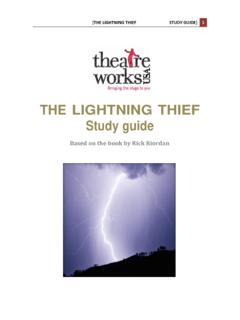Transcription of The Cult of the Black Cube - Coronacircus
1 The cult of the B lack cube hoz ur n i f lc U0 PHL. sojotyn ( ^. r j f mK L MPl0nnD 3HL. Theion Publishing, 2017. All Rights Reserved. No part o f this publication may be reproduced or transmitted in any form or by any means, electronic or otherwise, without the written permission o f the copyright owner. Edited by David Beth Layout & Typesetting by Jessica Grote Theion Publishing Printed and bound in Germany Table of Contents F oreword by Frater U D p. 1. The cult of the B lack cube I n troduction (A n A necdote) p .21. Overview Section One: Scholarly Materials on Saturn Saturn in Isla mic Texts p.)
2 35. Saturn in the Classical 'Tradition Saturn in the I ndian 'Tradition Section T wo: Saturnine G nosis The Spiritual P a th p. 89. The Saturnine D e ity : A nalysis The Saturnine D e ity : I nterprelation The Saturnine P a th p. 109. Section Three: Saturnine Practice Overview p. 123. Saturnine Devotion: Establishing a Shrine p. 125. Saturnine M a g ic p. 130. Sacred Time p. 133. Saturnine R itu als S e lf I nitiation Rite The Oracle of Cronos p. 143. T o Summon Saturn - V ariant I-III p. 145. The B lack cube The R ite of Chains p. 151. Concluding Remarks p.
3 155. Selected annotated B ibliography p. 159 Appendix I p. 167. Appendix II I mage Credits p. 173 Editions p. 175. F oreword I n his introduction to this book our author wastes no time in pinpointing a major issue that has bugged occultism and the Western magical traditions for centuries if not millennia: When I'm asked what particular spiritual tradition I follow, I often have to resist the urge to say "Saturnine Gnosis," because the experiences, rituals, and practices that I follow are ultimately connected to chthonic entities and their ruling Intelligence that fundamentally is not a good or kindly being, namely the Saturnine deity.
4 Indeed, the term 'Saturnine (or, more commonly: Saturn) Gnosis' shares its ambiguity with many if not most occult concepts and tags. Whereas, to the uninformed reader, its constituent elements ('Saturn,' 'Gnosis') may seem to be straightforward enough, any closer in-depth look will reveal multiple different layers of meaning, a good many of which appear to be downright contradic- tory, incompatible, with one another. This has made for a lot of bewilder- ment and occasionally bitter disputes within the various occult communities throughout the ages, with little effort being spent on analyzing the specific factors - philosophical, intellectual, societal, historical or, summarily, 'cultural'.
5 - governing and fundamentally informing this intrinsic equivocation. 1. Thus, many occultists: writers, readers, teachers, acolytes, and practitio- ners may be and indeed are aware that Saturn as a planetary deity symbolically stands for the 'guardian of the threshold' as is the case, for example, in classical astrology. However, this epithet does not easily and certainly not intuitively comply with equating Saturn to the salvific figures of Lucifer (more commonly a traditional denotation of the morning and/or evening star, Venus) and Prometheus, not to mention the contrarian and - to many - sinister character Satan, as a number of other schools and traditions are wont to do.
6 The Greek term gnosis in turn is generally translated as 'knowledge.' This, while technically accurate, omits to address the fact that what is typically implied by gnosis within a philosophical or metaphysical context is actually knowledge of a revelatory and salvific type that goes way beyond mere intel- lectual, cognitive ratiocination. Contrary to common parlance, where it may stand for basically any set of data and information (vide, for example, coder speak in information technology), in occultism it is imprinted by its reference to antique Gnosticism - an eminently ambiguous term in its own right whose definition has been and actually still is subject to ongoing furious academic debates for the better part of two centuries - longer, in fact, if you choose to factor in the early Church fathers' contention and propaganda concerning the Gnostics' purported 'hereticism.
7 '. This ambiguity issue is nothing new, of course, and everyone who has devoted more than perfunctory attention to the history of occultism is basi- cally aware of it. Introductory works dealing with occult disciplines ranging from alchemy and astral projection to astrology, from divination to geomancy, Enochian Aethyrs, the Kabbalah, ceremonial magic, sorcery and shamanism, from sex magic, sigil magic and success spells to talismantics, the Tarot, theur- gy et cetera, to name but a representative selection, will usually explain the concept of symbols as inherently ambivalent markers ill-suited to simplistic one-size-fits-all interpretations.
8 Nevertheless, this theoretical consensus has done little to prevent acrid controversies between uncounted occultist factions over which particular exegesis and, by inference, day to day handling of any given set of symbols is the 'true' and 'legitimate' one. By way of a particularly illustrative case in 12. point let's take a brief look at the Coins of the Tarot deck and the elements that are commonly assigned to them. General consensus, widely accepted to this day and ranging back to the 19thcentury has it that, obviously being a symbolic representation of money, the Coins should be attributed to the element Earth.
9 This reflects the Victorian rationale of material prosperity invariably culmi- nating in the acquisition of'safe' and 'stable' real estate ('property proper' as it were) - a fundamentally feudalist view of economic prowess hailing back to a predominantly agrarian, pre-industrial society. Yet even as long ago as the 19th century, there was one notable prominent exception: in his seminal treatise Le Tarot des Boh miens, clef absolue des sciences occultes [Tarot of the Gypsies. The Absolute Key to the Occult Sciences] o f 1889 the Spanish born French occultist, former theosophist, Martinist, magician, author and court adviser to the Russian tsar, Papus ( G rard Analect Vincent Encausse, 1865-1916) assigns the element Air to the tarot's Coins.
10 While he doesn't bother much with explaining this decision, it does appear to be more in accord with our contemporary post-industrial (and, arguably, even Marxist). view of money as a volatile abstraction characterized by an essential mobil- ity and insubstantial flightiness. Whereas it may doubtlessly be deployed to purchase and maintain tangible immovables such as Earth-related real estate, landed property, landholdings and the like, money itself is, at least within the framework of this specific paradigm, an entity functionally distinguished by its ability to move about from one owner to the other.




